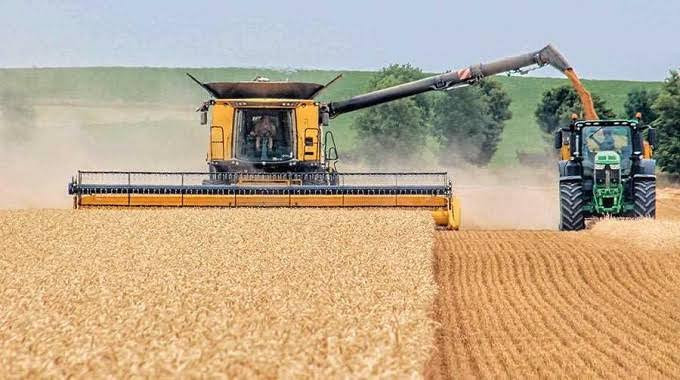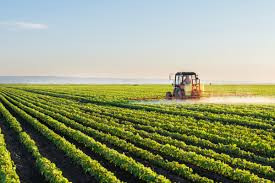
BY TATIRA ZWINOIRA THE Zimbabwe Mercantile Exchange Private Limited (ZMX) has listed soya bean on its trading platform with government approval as a pilot project ahead of the bigger cash crops such as maize, wheat and cotton.
ZMX, launched on October 18, 2021, operates an electronic warehouse receipt system (WRS) and a commodity trading platform for the trading and financing of agricultural commodities.
According to its website, the WRS enables commodity holders like farmers to deposit their commodity with a designated warehouse in exchange for a receipt, a negotiable instrument that can be used as collateral for credit facilities or for spot trading.
The soya bean listing makes it the fifth commodity to be listed for spot trading after white sorghum, red sorghum, millet and sugar beans.
“This trading is starting as a pilot that will allow decision makers to draw lessons that will help the modalities for the subsequent trading of other strategic commodities on the platform without prejudicing the national food and nutrition security of the country,” Agriculture permanent secretary John Basera said in a speech read on his behalf at the listing.
“This is a major stride towards a private sector-led and public sector facilitated agriculture economy in line with the dictates of the National Development Strategy 1. The Zimbabwe Mercantile Exchange was launched on October 18, 2021, as a private sector initiative but largely supported by the government.”
This year, government approved the acquisition of 20% shareholding in the ZMX and committed up to US$360 000 as the capital contribution.
Basera added that the capital injection transformed ZMX into a private/public partnership with the other shareholders being Financial Securities Exchange (Private) Limited with (22%), TSL Limited (22,5%), and CBZ Bank (35%).
- Chamisa under fire over US$120K donation
- Mavhunga puts DeMbare into Chibuku quarterfinals
- Pension funds bet on Cabora Bassa oilfields
- Councils defy govt fire tender directive
Keep Reading
The listing of soya beans came with the commitment from the Oil Expressers Association of Zimbabwe, through its chairman, Busisa Moyo, that members would participate on the ZMX.
Soya bean is one of the several main sources of cooking oil.
ZMX leverages off the Warehouse Receipt Act of 2007, is an Act which provides for, among other things, the establishment and registration of warehouses associated with the issuing of warehouse receipts and the licensing of warehouse persons, to provide for the storage of agricultural commodities in registered warehouses and provide for the setting up of a system of inspection, grading and weighing of such agricultural commodities.
According to the Act, the total number of commodities on the schedule allowable for trading under the WRS and commodity exchange is currently at 49.
“The Statutory Instrument (SI) 224 of 2020 regulates registration of warehouses and the issuance, negotiation, trading and settlement of Warehouse Receipts through exchange infrastructure. Currently, 22 warehouses have been on boarded and three warehouse operators have been registered to operate under the warehouse receipt system,” Basera said.
“The warehouse operators, who are part of the Commodities Exchange, include GMB and Bak Logistics. These will provide transport, logistical and storage facilities for farmers, thereby simplifying the process of collecting the soyabeans from the farms and providing storage thereof.”
Only five of the 49 aforementioned commodities are, however, allowed for spot trading on the ZMX.
“The importance of the WRS is that when you buy on the ZMX you don’t have to be given the physical commodity. You are, instead, given the instrument which is now declared as a security so you own that commodity. You don’t have to pick up that commodity,” ZMX chief executive officer, Collen Tapfumaneyi told Newsday Business.
“There is a process called withdrawal so you go onto your platform and your warehouse receipt will be listed there and you indicate that you want to withdraw all the commodities under it or part of it. Immediately, a withdrawal process starts and you organise the logistics to pick up.”
Tapfumaneyi pointed out that when one opens a ZMX account, they will have a commodities account and a cash account.
“So, if you have bought, your account registers that you have so much or so many tonnes of soya beans (as an example) under your name. And, you can now choose to either withdraw, if you want to take some of it or if you sell, your cash account is credited with funds,” he revealed. “If you want your cash, you can process your withdrawal. So, you can only withdraw cash if your cash account has the funds or you can only withdraw the commodity if the commodity account has the commodity through the WRS.”
ZMX can be accessed through their website, mobile application (through C-Trade) or through the Unstructured Supplementary Service Data platform (text messaging).
Basera said SI 184 of 2021, provides for the ZMX rules of operations, as well as the onboarding of all the different categories of players on the ZMX trading platform.
“This SI is subject to government policy as to what can be traded on the exchange. The current policy position has allowed soya bean to start trading. Maize cannot trade on the platform,” he added.











